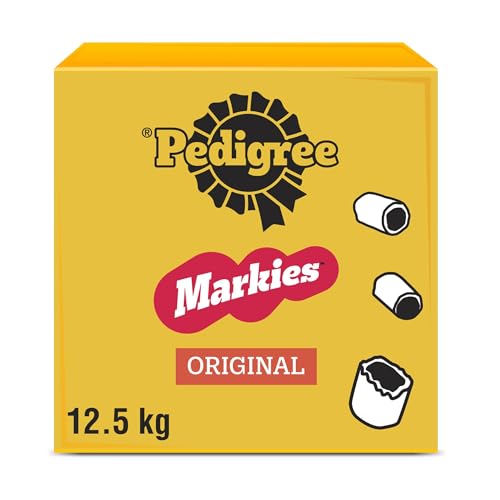




After adopting Max, my golden retriever, I soon realised that leaving him unattended is a balancing act. In the early days, I discovered that around four hours is the sweet spot for him. Beyond that, he begins to feel anxious, and I return home to a mini tornado of chewed shoes and scattered cushions.
During one particular instance, I underestimated his need for company. A six-hour absence resulted in a surprise for me: a shredded sofa cushion and a guilty-looking dog. That day taught me the importance of gradually increasing his alone time. I started with short intervals, rewarding him for calm behaviour, and eventually worked up to a maximum of five hours.
It’s essential to consider factors such as age, breed, and temperament. Puppies, for example, shouldn’t be left for more than two hours, while adult dogs may handle longer periods. Regular exercise and mental stimulation before leaving him also make a noticeable difference. On days when I ensure Max has had a good walk and some playtime, he’s content to relax until I return.
Creating a comfortable environment helps too. I leave him with his favourite toys and an item of my clothing, which seems to soothe him. In my experience, knowing the signs of distress–like excessive barking or destructive behaviour–can guide how I manage his alone time effectively.
Recommended Duration for Canine Companions
For most breeds, a span of four to six hours is optimal for leaving them unattended. Adjustments may be necessary based on specific needs and temperament.
Factors Influencing Time Away
- Age: Puppies require frequent breaks and attention. Usually, they can handle a maximum of two hours without supervision.
- Health: Dogs with medical issues may need more frequent check-ins, while others in good health can manage longer periods.
- Behaviour: Anxious or destructive pets may not fare well if left for extended periods. Training and gradual acclimatisation to solitude can help.
- Breed Characteristics: Some breeds, like Greyhounds, are more independent, while others, such as Border Collies, thrive on companionship.
Tips for Managing Time Apart
- Provide engaging toys that stimulate their mind.
- Consider a pet camera to monitor their behaviour remotely.
- Hire a dog walker or ask a friend to check in during the day.
- Establish a routine to help them feel secure.
By considering these factors, it becomes easier to determine the appropriate duration for separation, ensuring a happy and healthy environment for your furry friend.
Understanding Your Dog’s Age and Breed
For puppies, a few hours without companionship is manageable, but as they grow, their needs change. Generally, breeds with higher energy levels, such as Border Collies, require more interaction and stimulation. Conversely, smaller breeds like Chihuahuas might handle solitude better due to their independent nature.
Age plays a significant role. Younger dogs, especially those under six months, often need frequent breaks. As they mature, many can adapt to being on their own for extended periods. However, senior dogs might experience anxiety or discomfort when left unattended, so consider their temperament and health status.
Different breeds have varying tolerances for isolation. Working dogs, bred to be active and engaged, may struggle with loneliness. In contrast, breeds like Bulldogs, known for their laid-back nature, typically adjust well to quieter environments.
Monitoring behaviour is key. If a dog shows signs of stress, such as excessive barking or destructive chewing, it’s an indication that they might not cope well with solitude. Gradual training can help, allowing them to become more accustomed to being apart, which benefits both the pet and the owner.
Consider engaging a pet sitter or dog walker if extended absence is unavoidable. This provides companionship and breaks up the day, addressing both physical and emotional needs. Always tailor your approach based on your furry friend’s specific characteristics and preferences for a happier, healthier life.
Signs of Separation Anxiety in Dogs
Look for excessive barking or whining when you step out. This vocalisation often indicates distress. If your furry friend seems agitated, pacing back and forth or constantly following you around the house, it may signal anxiety about your absence.
Destructive behaviour is another red flag. Chewing furniture, digging, or tearing up items can stem from frustration and worry. Pay attention to any accidents in the house, particularly if your pet is typically house-trained. This regression often happens during times of separation.
Changes in appetite may also occur. Some dogs refuse to eat when left alone, while others might overindulge when you’re not around. Monitor their eating habits closely to identify any shifts.
Physical signs include drooling, excessive panting, or trying to escape. If you notice your pet attempting to break free from a crate or scratching at doors, it’s a clear indication of distress.
Each dog is unique, so recognising these signs early on can help you address any underlying issues. If you suspect separation anxiety, consider gradual desensitisation techniques, or consult a veterinarian for tailored advice. Remember, understanding your pet’s behaviour is key to ensuring their emotional well-being.
Recommended Time Limits for Different Dog Sizes
For small breeds, such as Chihuahuas and Pomeranians, a maximum of 2-4 hours is advisable. These pups thrive on companionship and can feel isolated if left for extended periods. I remember the first time I left my little Chihuahua, Bella, for over four hours. When I returned, she was anxious and had chewed on my favourite pair of shoes. Lesson learned!
Medium-Sized Breeds
Medium-sized dogs, like Beagles and Bulldogs, typically handle 4-6 hours without issues. They possess a bit more independence. I had a Beagle named Max who enjoyed his solo time as long as he had his toys and a comfy spot to nap. However, I noticed he became restless after the six-hour mark. Keeping a close eye on their behaviour is key.
Large Breeds
Large breeds, such as Labrador Retrievers and German Shepherds, can often manage up to 8 hours. They generally have a calmer disposition and can entertain themselves. My German Shepherd, Rex, was perfectly fine during my workdays. He had his favourite chew toys and a big yard to roam. Still, regular exercise before and after my absences kept him happy and balanced.
Preparing Your Dog for Alone Time
To ensure a smooth transition for your furry friend during solitary periods, start by creating a comfortable space for them. Designate a cozy area with their bed, toys, and water. This becomes their safe haven when you are away.
Introduce short absences gradually. Begin with brief departures, allowing your companion to adjust before extending the duration. This step-by-step approach helps build their confidence and reduces anxiety.
Engagement is key. Incorporate interactive toys or puzzles that keep your pet mentally stimulated while you’re out. Consider items that dispense treats, as they can occupy your dog and provide a rewarding experience.
Establish a routine. Dogs thrive on predictability, so consistent schedules for feeding, walks, and playtime make for a more relaxed pup. This helps them understand when to expect your return.
Don’t forget to practice basic commands. Teaching obedience can significantly ease the transition to solitude. For guidance on the right age for training, check out this informative link on how old should a dog be for obedience training.
Finally, consider using calming products, such as anxiety wraps or pheromone diffusers, which can help soothe nerves. Pay attention to your pet’s behaviour during this adjustment phase and make changes as needed.
| Tip | Description |
|---|---|
| Comfortable Space | Create a designated area with their bed and toys. |
| Gradual Absences | Start with short departures and gradually increase the time. |
| Interactive Toys | Use toys that engage your dog and keep them occupied. |
| Routine | Maintain consistent schedules for feeding and walks. |
| Obedience Training | Teach basic commands to ease their anxiety. |
| Calming Products | Consider anxiety wraps or pheromone diffusers. |
Activities to Keep Your Dog Engaged While Alone
Interactive toys are a fantastic way to keep your furry friend occupied. These can include treat-dispensing puzzles that challenge your dog’s mind while rewarding them for their efforts. I’ve noticed that my pup spends ages trying to figure out how to get the treats out, which keeps him engaged and stimulated. You can easily find a variety of these toys online or at pet stores.
DIY Enrichment Ideas
Creating a scavenger hunt at home is another great option. Hide treats around the house and let your dog sniff them out. It taps into their natural instincts and adds excitement to their day. I often spread a few of my dog’s favourite snacks in different rooms before I leave, and it’s amazing to see how quickly he gets to work finding them.
Calming Activities
Sometimes, dogs just need to chill out while you’re away. Consider leaving a comfy bed in a quiet spot with some of your worn clothing. The familiar scent can be comforting. You might also try leaving on a TV or radio with soothing sounds or dog-friendly shows, which can create a calming atmosphere. A friend of mine swears by this method, and her dog seems much more relaxed when she returns home.
Lastly, don’t underestimate the power of a good bone or chew toy. Chewing can be incredibly satisfying and helps to keep your dog busy for longer periods. Just ensure they’re safe and appropriate for your dog’s size and chewing habits. If you really want to keep their environment clean, consider exploring this link on how to control ammonia in fish tank for insights into maintaining a healthy space.
When to Consider Professional Help for Your Dog
If your furry friend displays signs of distress or behavioural issues consistently, it might be time to seek assistance from a professional. For instance, if your dog exhibits severe separation anxiety, such as excessive barking, destructive behaviour, or attempts to escape, contacting a dog trainer or behaviourist is advisable. These experts can provide tailored strategies to address specific challenges.
Behavioural Red Flags
Watch out for indicators like persistent aggression towards people or other animals, extreme fearfulness in new situations, or obsessive behaviours like excessive licking or chewing. Any of these patterns may suggest underlying issues that require expert intervention. A qualified trainer can evaluate these behaviours and design a structured plan to help your dog adapt and thrive.
Health-Related Concerns
Changes in appetite, energy levels, or potty habits can signal health problems. If you notice such alterations, consult a veterinarian before exploring behavioural training options. Sometimes, physical discomfort or illness may manifest as behavioural issues, and addressing health concerns should be the priority. After ensuring your dog is healthy, you can then focus on behavioural aspects with the help of professionals.










